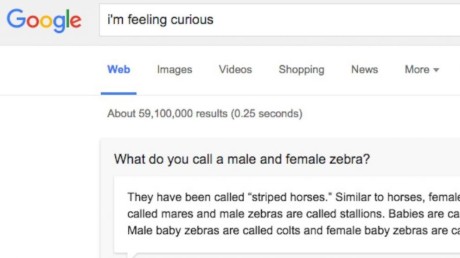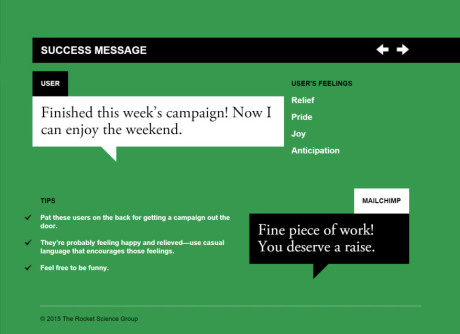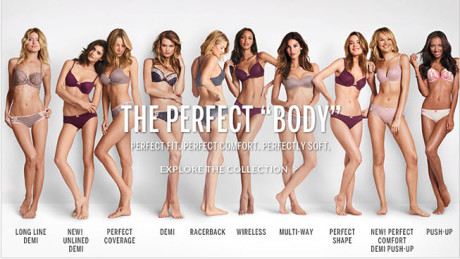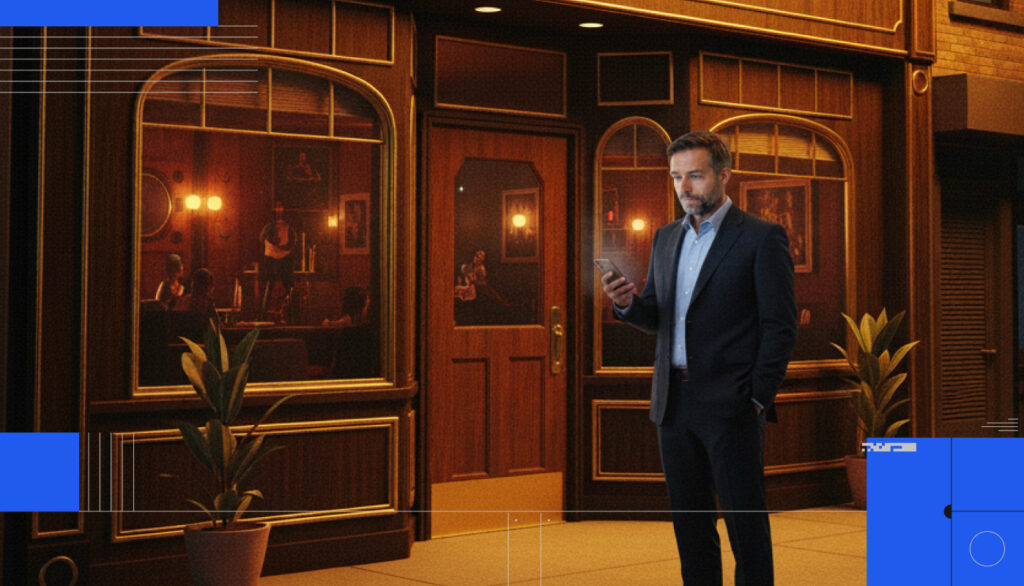By Dinuki Suraweera
Not having a clear brand voice can feel like the movie Eat, Pray, Love. Julia Robert’s character, Elizabeth, prior to her trip to find herself, is what I like to call a hot mess. Confused and lacking direction. But after doing some explorative self-assessments (mostly by eating Italian food and lots of bicycling in Bali), she came out of it as a balanced and self-assured woman. Hell, she even got a man out of it! Discovering your brand voice is similar to the process of how an individual finds themselves, but with one caveat – It’s not about you, it’s about your customer.
1. Find Your Customer Before You Find Your Brand
Think of your customer as Elizabeth. Just as she used world travel to learn more about herself, there’s many vehicles you can utilize to “find” your target. The end goal of this research is to develop an authentic, thoughtful and detailed target persona for your customer. While the steps required to develop a target persona are extensive enough for its own blog post (already covered here on Moz by my CEO, Mike King), it’s the process of gathering quantitative and qualitative data points about your customer and drawing compelling human insights from the trends observed. Methods such as sending surveys, reviewing mailing lists (Full Contact or TowerData are helpful in this case), Google Analytics and online customer reviews are just some of the ways you can gather pertinent facts to gain insight into your customer.
Stop!
Sorry, I got a little aggressive there but this is important. This doesn’t mean that you give data the power to make your final decision; they’re just numbers. The data can provide vital, directional clues as to who your customer is but it’s your responsibility to make the final call on your target persona. Use your research as a guide but nothing replaces human intuition.
In other words, work the numbers, don’t let them work you.
To illustrate the point, let’s define a persona.
Hipster Henry Target Persona
For example purposes only, no real data was used in the making of Hipster Henry
Hipster Henry represents a valuable target segment as he is ahead of the curve on the latest pop culture trends. He is an early adopter that values being the first to know about what’s cool. This speaks to his deep desire to be different, even though he seldom admits to having this desire. His number one pet peeve is being called a hipster and doesn’t self-identify with his own target segment.
Henry values a “meaningful” lifestyle and is committed to finding his purpose on this earth. Henry satisfies this need by participating in social media movements like the ALS ice bucket challenge and consuming only fair-trade products. He believes in making a difference by listening to indie rock bands and attending cultural events such as Burning Man and SXSW, as he feels he is supporting “real music” (Coachella is way beneath him).
Hipster Henry keeps a consistently full-grown beard and wears eyeglasses that aren’t prescription in an effort to add to his mysterious allure. He shops at vintage stores and high-priced boutiques due to the guarantee that he won’t be wearing the same thing as someone else in the room (unless he’s hanging out with a bunch of other hipsters, which is usually the case).
Hipster Henry responds to marketing and advertising that provides him the assurance, or illusion, that he wasn’t “sold” to. Highly visual, non-traditional ads with minimal copy catches his attention.
User Needs
• Desires to live in Williamsburg, Portland or Austin, TX
• Spends money on expensive products that don’t look expensive
• Socializes in dive bars before they go “mainstream”
• Hates being dubbed as traditional but values traditional fashion trends (suspenders, bowties, retro kicks, etc.)
Targeted Messaging:
• Be More Different, Care About Not Caring, Glasses Aren’t Just for Better Vision
Key Traits:
• Beards are a status symbol; Consumes only “free-range”, “organic” or “fair-trade”; Has a love-hate relationship with Apple products
Most Represented Characteristics:
• Discretionary spend estimate: $35,000 – $150,000 or whatever’s in their trust fund
• Education: Multiple degrees from a small liberal arts college or graphic design school
• Careers: Graphic Designer, Travel Blogger, Craft Beer Connoisseur
• Vehicle classification: Toyota Prius, Vintage Unicycle
No hipsters were harmed in the making of this persona
2. Be Likeable, It’s That Simple.
Now you know your customer. You’ve taken a deep and intimate look into their lives, from how much they make to their motivations and passions. When developing your brand voice, keep in mind that this voice has to cut through thousands of other brand voices that are trying to reach them on a daily basis.
For example, companies with exceptional brand personalities such as Apple, MailChimp and Google have developed brand voices that people incorporate into their everyday lives. While the services and experiences that these brands offer have a lot to do with why people love them, it’s also how they’ve positioned themselves from a brand personality perspective. They use language that is relatable and familiar, speaks to the needs and desires of their customer and sounds more like a friend than someone looking to sell a product.
- For example, this message from MailChimp to the user that just completed a campaign directly taps into the user’s feelings of joy, pride and relief about getting the campaign wrapped up. Tapping into a user’s feelings is how a brand humanizes their company or service.
If I spent several hours finishing up an email campaign that got completed at 6:30 PM on a Friday with no one around to give me kudos, you’re damn right I’ll appreciate that MailChimp told me I deserve a raise!
- Another great example is Google. Despite being an incredibly intelligent, innovative and sophisticated company, their copy and design is extremely simplistic and easy to read. They don’t try to wow you with overly technical jargon or futuristic design – they simply give you the information you asked for. And if you have nothing to search for, they’ll entertain you with fun features so you don’t get bored.

Wait, not only will Google give me a list of search results ranked in order of credibility and relevance but they also care about my knowledge about African wildlife? I think that deserves a slow clap.
- The example below is by an instant messaging platform made for small businesses and start-ups named Slack. Every morning when I open up this application, a message such as this pops up as it loads.

I don’t know about you but I love some positive affirmation before I launch into 8+ hours of start-up life. They tapped into my need for encouragement, positive reinforcement and good ol’ fashioned ego boosting. I’d say they hit it right on the mark.
I can’t show you the good without the bad. Sadly, some of these companies are giants in the industry with great services and products. However, it’s hard to recover once you’ve dropped the ball on how you speak to your target audience.
- This print advertisement by Victoria’s Secret is a good example of copy that doesn’t relate to their consumer. Having a headline that reads “The Perfect Body” plastered in front of a row of supermodels doesn’t make their brand personality seem inclusive or in-touch. 90% of their female customer base is excluded in this ad.
The mistake here isn’t purely related to the visual, it’s how the visual relates to the copy. A headline like “All Bodies Are Perfectly Made; We’ve Got the Perfect Bra for Yours” would have been a more effective way to communicate the quality of their product without making their customer feel excluded from the “perfect body” club.
- This is a great example of an ad for a good cause gone bad. This website’s attempt to offer shock value fell short and instead sounds insensitive and condescending. Using verbiage such as “disgusting” and “hot sec” can minimize the very serious issue of alcoholism in young people.
This copy does not communicate the level of empathy required for a target customer to want to reach out and get help for a friend in need. A headline such as “You can help swipe left on alcoholism – join the fight” would work better in this case. This headline recognizes the seriousness of the issue and provides a gentle call-to-action for the target customer by painting them as an important part of the solution.
- The reason why this ad is bad requires no explanation. Any references to spiking a woman’s drink is never good copy, especially when it’s accompanied by a man leering at an attractive woman. This is an example of a brand that tried too hard to be funny and failed miserably.
This visual would have worked fine with a line like “For those nights when you’ll over-do the eggnog”. Being edgy and funny is fine, if it fits your brand personality. Knowing the line between edgy and distasteful is key to not turning off a huge segment of your target consumers.
3. Divide Your Brand Voice into Components
Sometimes, it’s not enough to describe your brand voice in one simple statement. While it should be aligned under one overarching message, there should be smaller components that trickle up. Just like you can’t describe a human being’s voice and tone in one simple sentence, you shouldn’t do that for your company either.
For example, someone’s personal mantra could be that they are a “world traveler who’s fueled by new experiences.” That’s a great one-liner, but you can further dissect that into smaller components such as adventurous, independent, artsy, visual and so on.
At iPullRank, we take the brand voice of our clients very seriously. We understand that it’s extremely important to take their existing brand personality into account, but we also extrapolate on what’s working for them and eliminate what’s not. We do this by creating an overarching “brand mantra” and dissecting that mantra into four components. Below is an example of how we dissect our own brand voice into specific components.
iPullRank
CORE PRINCIPLE/BRAND MANTRA
iPullRank is an innovative voice in the digital marketing space – we’re fueled by creativity and driven by data.
We set ourselves apart by consistently staying a few steps ahead of the industry in regards to innovation, tools and processes. Our day-to-day operations are governed by producing PROUD work – Proud, Reliable, Outstanding, Useful & Dedicated. We’ve closely studied the industry in order to provide our clients solutions that provide better results. Instead of simply following the latest trends in digital marketing, we improve upon them. We don’t just desire to be a better digital marketing agency; we strive to be a unique one.
DEFINING THE VOICE
Innovative/Modern
iPullRank communicates this tone by using modern and clear language on the company site, guest blog posts and other communication. Spreading the word on the latest digital marketing hacks positions iPullRank as an innovative thought leader in the digital marketing space. iPullRank should use language that proves our commitment to ideas over tradition and strategy over routine. Digital marketing is ever-changing and iPullRank is a game-changer – both as an agency and as a brand.
Personable/Relatable
iPullRank communicates a personable and relatable tone by avoiding overly technical jargon and verbiage. Even though digital marketing is a largely technical and data-driven industry, we prefer to sound casual and conversational in our copy. We speak to our readers and clients in an informal and straightforward tone because we desire to make digital marketing a less complex animal to understand. While we’re confident in our expertise on this subject, we wish to be approachable so that our readers aren’t intimidated to learn more about what we do.
Knowledgeable/Credible
iPullRank communicates credibility by staying informed on all current trends and tools in the industry. We have positioned ourselves as a go-to, one-stop resource for everything digital marketing. Sounding credible is vital to communicate that we’re an agency that values data, research and facts – in other words, we don’t do “fluff”. We’re committed to providing proven and tested solutions that produce REAL results. This should be communicated by using an approachable, authoritative tone in all guest blogs, infographics and website copy.
Creative/Versatile
While iPullRank values the numbers, we’re equally creative. Our ability to creatively conceptualize a client’s strategy speaks to the versatility of our team. We communicate this by using highly visual elements in all our copy (data-graphics, illustrations, modern design & color, etc.) and presenting our work in a memorable way. All our communications should include colors, design, illustrations and typography that is sleek yet striking. The way we present our brand should speak to the innovative and highly creative ideas we bring to life for our clients.
Just reading through that makes you feel like you and iPullRank have been drinking buddies for years, doesn’t it? Bingo, that’s how your customer should feel.
4. You’ve Found Your Voice, Now Test It
It’s glorious isn’t it? You’ve researched your customer, made yourself likable and dissected your brand voice to the point where you know exactly who you are. I’m willing to bet that you feel just like Julia Roberts when she’s riding down the dirt roads of Bali on her bicycle, hair blowing in the breeze behind her.
Well, hold on just one second there Zen Master, your work’s not quite done. I’d be doing you a disservice if I didn’t mention one important part of discovering your brand voice – A/B testing it (iPullRank lives by this, you could almost say that it’s our secondary brand mantra).
You may be surprised to learn that you can A/B test a brand voice; it’s actually an effective way to see how your customers respond to it. Your first step is to rewrite your existing web copy and infuse your new brand personality into it. You can A/B test just about anything on your site – from headlines to body copy to images to CTAs.
Keep in mind that you should only A/B test one element at a time so make sure your testing strategy is solid before plowing ahead. Optimizely is one of the best tools out there that will deliver random versions of your site to users. From there, according to how engaged your customer is, you can determine how effective (or ineffective) your re-written web copy is. Tools like KissMetrics and Unbounce are great ways to track how your new brand voice is performing based on metrics like conversions, CTR and much more.
A/B testing, especially for us creative, copywriter types, can feel a bit daunting. So let’s take a look at some easy best practices to follow when conducting the technical part of your brand self-discovery.
- Don’t be afraid to re-test – It’s the age-old battle between human and machine; your instincts say one thing but your data says another. Don’t roll a dice on this one, re-test to make sure.
- Don’t rush the process – I know you’re excited to get your new voice heard but ending the test too early leaves room for error. Make sure the number of results you obtain is statistically significant to what you’re trying to measure.
- Start Small – Start off by using a series of landing pages with paid media driving to them. Eventually, move on to testing the entire site.
- Don’t confuse repeat visitors – Don’t allow a repeat visitor to see two different variations of the web page. Make sure your code is written so that they see the same content every time until the test is complete. If you don’t, they might think you’re trying to do some weird web voodoo on them; not a good look.
And That’s All Folks!
I’m all about recaps so let’s conclude with that. To discover your brand voice, you must:
- First find your customer, then find your voice
- Connect with your customer by being relatable and likable
- Develop an overarching brand mantra and then divide that into multiple voice & tone components
- A/B test variations of your new brand voice
If there’s just one thing I can leave you with, it would be this. Finding your brand voice shouldn’t be scientific nor should it be purely subjective. Your journey to brand voice discovery should be guided by sufficient data and research but not dictated by it. The ability to gain compelling insights (which is most often determining the problem that needs to be solved for your customer) from your research is what separates the intelligent marketers from the mediocre ones.
So go be Julia Roberts and find your voice.













